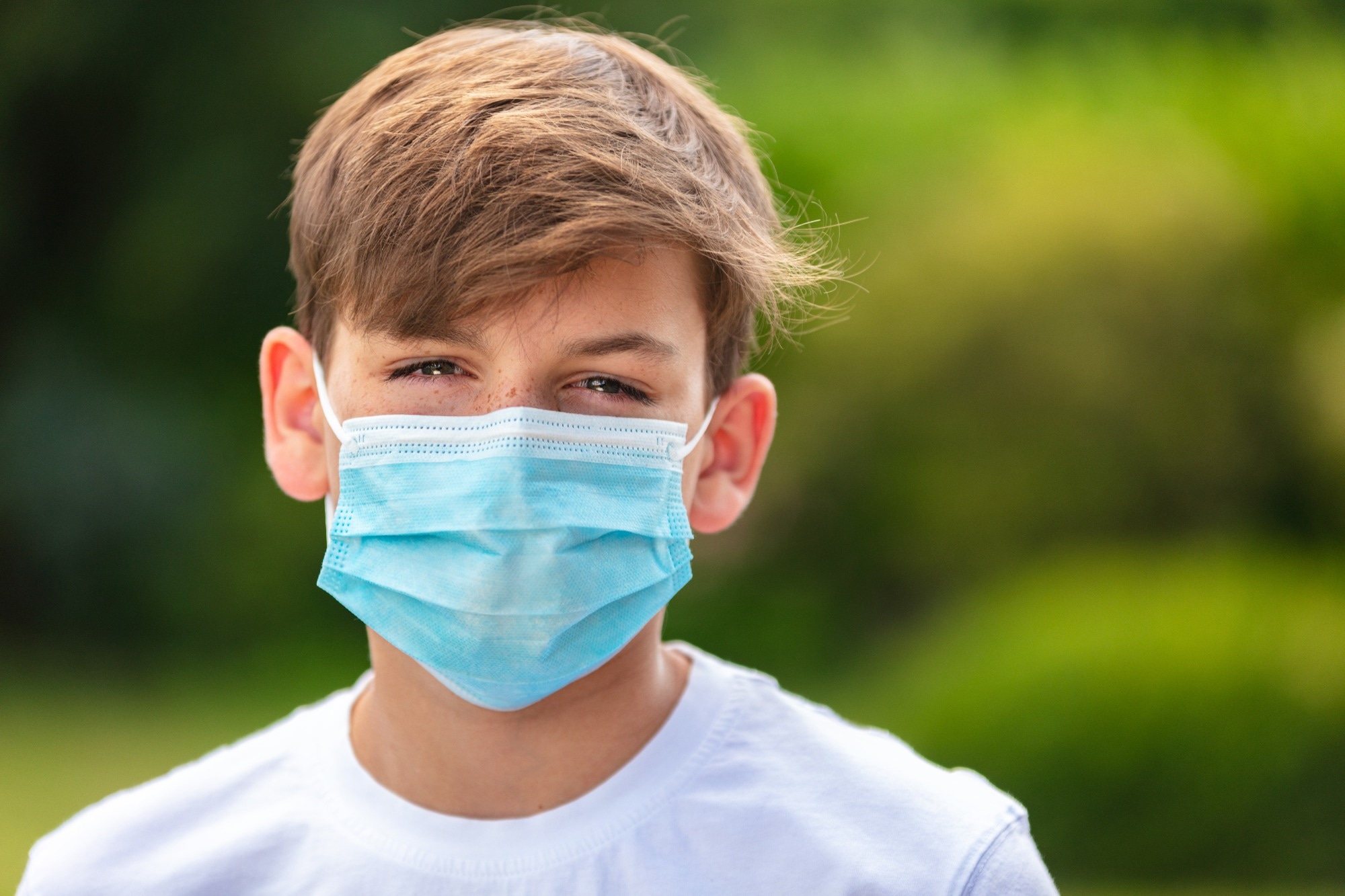This data encompassed body temperature measurements of multiple household members of participating households for October 2019 to October 2022. It helped researchers estimate within-household viral transmission during multiple periods spanning the coronavirus disease 2019 (COVID-19) pandemic.
 Study: Smart Thermometer–Based Participatory Surveillance to Discern the Role of Children in Household Viral Transmission During the COVID-19 Pandemic. Image Credit: DarrenBaker/Shutterstock.com
Study: Smart Thermometer–Based Participatory Surveillance to Discern the Role of Children in Household Viral Transmission During the COVID-19 Pandemic. Image Credit: DarrenBaker/Shutterstock.com
Background
The traditional method of discerning within-household viral transmission at a national scale was contact tracing, which is time-consuming and labor-intensive. On the contrary, smart thermometer–based participatory surveillance enables quicker collection of public health-related data using new-age devices, e.g., smartphones.
More importantly, this syndromic surveillance detects clinical case features early on to complement traditional methodologies.
Notably, during the COVID-19 pandemic, transmission rates of enveloped viruses, such as respiratory syncytial (RSV) and influenza), were low relative to respiratory infections due to severe acute respiratory syndrome coronavirus 2 (SARS-CoV-2).
About the study
In the present retrospective study, researchers divided the COVID-19 pre- and pandemic time into multiple periods, as follows:
- pre-COVID-19 pandemic period in the US spanned between October 1, 2019, and February 29, 2020;
- between the first COVID-19 outbreak, i.e., from March 1-May 15, 2020, and the fourth ending July 2021, there was a second transmission outbreak that began in May 2020 and ended in September 2020, and a winter wave that ended by March 6, 2021;
- fourth transmission period spanned March 7 and July 14, 2021;
- Delta wave began on July 15 and December 18, 2021;
- Two Omicron waves by sub-variants BA.1/BA.2 and BA.4/BA.5 occurred between December 19, 2021, June 19, 2022, June 20, 2022, and October 29, 2022, respectively.
They considered participants aged 18 years or older as adults and volunteers aged zero to eight as younger, and nine to 17 as older children, respectively. They self-reported their age and gender.
All participating households comprised one or more individuals who used the same thermometer. Thermometer data encompassed body temperature, a timestamp, and the location of the person whose temperature the smartphone-connected thermometer app recorded.
The researchers analyzed inferred household transmission patterns for participating households and compared those across pandemic periods, considering whether schools were open (or not) during that time.
For this, the researchers categorized these patterns, beginning with the index case, as child to child, adult to adult, child to adult, and vice versa. They also analyzed variations based on whether the index case occurred in younger or older children.
Results
The study analysis covered 320,073 households with multiple participants, where 53.6% and 53.7% were female and male adults, respectively. The participants in total, including adults and children, were 862,577.
Overall, based on participatory surveillance data of >1.4 million individuals in over 800,000 households who all used a smartphone app-connected thermometer, children played an essential role in within-household viral transmissions.
Based on periods evaluated in this study, household transmissions increased from the fourth pandemic period to the Omicron BA.1/BA.2 wave.
The number of febrile episodes is a tool for indicating new COVID-19 cases, and the index case is the first fever onset in an inferred household transmission sequence.
There were 354,602 febrile episodes in households with multiple participants, of which 54,506, i.e., 15.4% of cases were inferred household transmissions, which increased from 10.1% between the fourth pandemic period to 17.5% in the Omicron BA.1/BA.2 wave.
During a febrile episode, fever onset is the first body temperature at or exceeding 38°C for rectal and aural readings, 37.8 °C for oral readings, and 37.2 °C for axillary readings.
Over 70% of participating households had a pediatric index case, but this percentage fluctuated weekly between 36.9% and 84.6%. Pediatric-driven viral transmission was higher when schools were open during 2020-2021 and 2021-2022, i.e., two consecutive academic sessions. Children contributed less to inferred within-household transmission during summer and winter school breaks, a consistent pattern for these two US school years.
On average, 70.4% of 38,787 transmissions in 166,170 households with adults and children had a pediatric origin. However, intriguingly, a pediatric index case was up to 0.8 times less frequent during school breaks in the US.
By the end of 2020, viral transmission dropped from 68.4% to 41.7% and from 80.3 to 54.5% at the beginning of 2022. Likewise, viral transmission rates dropped from 81.4% to 62.5% during summer breaks by 2021 and from 83.8% to 62.8% by 2022. The patterns of inferred household transmission persisted over two academic sessions, 2020-2021 and 2021-2022.
Conclusions
Prior studies have also shown that school opening increased respiratory viral transmission, and school holidays decreased the same. Accordingly, in this study, US children represented the majority of index cases after schools reopened in both school years, though these transmissions decreased during summer and winter school breaks.
The study results demonstrated that participatory surveillance using smartphone-connected devices enabled the measurement of infectious disease dynamics at a scale unfeasible with traditional methods.
Also, study personnel or contact tracers did not have to visit households for research investigations. In the future, researchers could collect additional data with onsite visits and validate the inferred respiratory viral transmissions by laboratory testing.
Nonetheless, ensuring equitable access to all systems that leverage digital technologies for data collection is crucial.